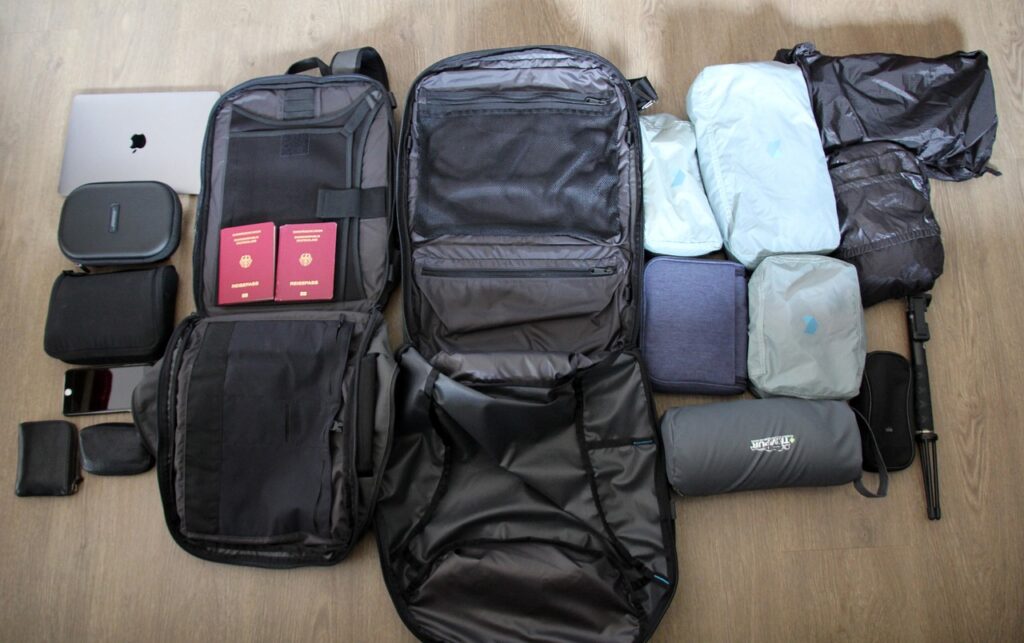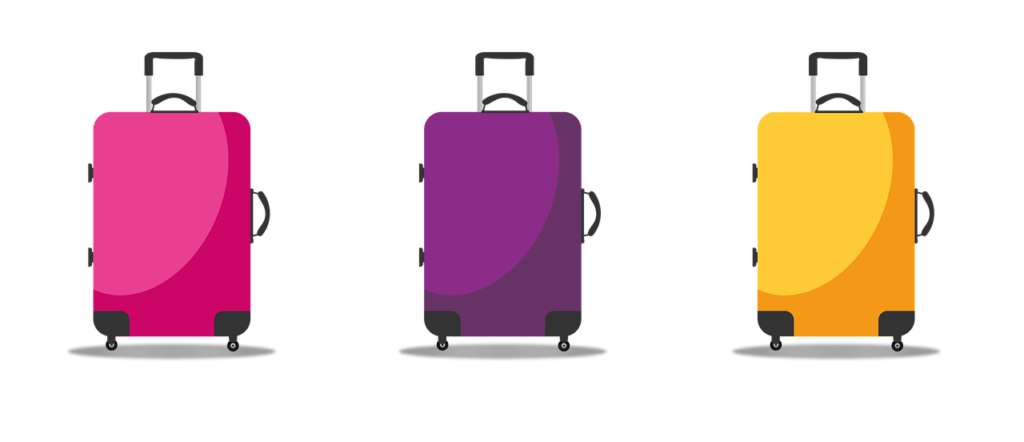How often have you wondered about the size restrictions for personal backpacks on airplanes? Whether you’re a frequent flyer or just planning your next adventure, understanding the specific guidelines for carry-ons and personal items can greatly ease your travel experience. Navigating these rules isn’t just about ensuring your backpack fits; it’s also about convenience, comfort, and maximizing what you can bring onboard. Let’s break down what you need to know about your backpack’s size when boarding a plane.

Understanding Airline Policies
Each airline sets its own rules, and these can vary significantly. It’s key to know what these are before heading to the airport. Airlines define personal items differently; some might permit a larger backpack than others. Generally, a personal item is any bag that can fit under the seat in front of you. Familiarizing yourself with these guidelines can help prevent unnecessary stress.
What Is Classified as a Personal Item?
A personal item usually includes smaller bags like purses, laptop bags, or small backpacks. But what’s crucial is size. For many airlines, the dimensions of a personal item should not exceed 18 x 14 x 8 inches (45 x 35 x 20 cm). Understanding your carrier’s restrictions can aid in packing efficiently.
Difference Between a Personal Item and a Carry-On
Both personal items and carry-on bags are brought into the aircraft cabin, but they serve different purposes and have distinct size limitations. Carry-on bags typically need to fit in the overhead compartments, often with a size limit of about 22 x 14 x 9 inches (56 x 36 x 23 cm). Conversely, personal items are intended to fit under the seat in front of you, typically allowing a tad more leeway in what you can bring without incurring extra fees.
Selecting the Right Backpack
Choosing the right backpack involves balancing practicality with airline restrictions. A good backpack should be durable, comfortable, and fit within the airline’s defined size limitations. Whether your trip demands more gear or just the basics will dictate the right size for your excursion.
Finding a Balance Between Size and Functionality
While it might be tempting to bring the largest allowable bag for more packing space, think about how functional it will be. A backpack that strains your shoulders or is difficult to fit under the seat can detract from a stress-free journey. Consider the features that make travel easier: compartments for organization, comfortable straps, and durable materials.
Features to Look For in a Backpack
When shopping for a travel backpack, prioritize those that are both lightweight and expandable. Features like padded laptop compartments, water-resistance, and ergonomic designs ensure that your personal item not only fits but serves your travel needs efficiently. Compression straps can also help you adjust the size to match the airline’s dimensions.
Packing Tips: Maximizing Space
Efficient packing is more about strategy than space. Using a smart approach to packing can significantly impact what you can fit in your backpack. With the right techniques, your compact bag can hold everything you need without surpassing size limits.
Roll Your Clothes
Rolling clothes instead of folding them can save space and reduce wrinkles. This method is particularly effective for bulkier items like sweaters and jackets.
Use Packing Cubes
Packing cubes are excellent for organization and compact packing. They allow you to categorize items and compress clothes further, maximizing the space in your backpack.
Prioritize Essentials
Being strategic about what you bring can mean the difference between a streamlined travel experience and a stressful one. Prioritize items you can’t easily replace at your destination, such as medicines and chargers, while leaving non-essential items at home.
Navigating Security Checks
Another layer of consideration for your personal item involves passing smoothly through security. Properly preparing your backpack for the security screening process can help you avoid unnecessary delays and scrutiny.
Liquids and Electronics
Remember the 3-1-1 rule for liquids: containers must be 3.4 ounces (100 milliliters) or less, packed in one quart-sized bag, and each passenger is limited to one bag. Electronics larger than a cell phone should be placed in a separate bin for screening, so they should be easily accessible.
Security-Friendly Backpacks
Some backpacks are designed with security in mind, featuring compartments that can be easily unfolded to lie flat on the scanner belt. This design simplifies the screening process for laptops and tablets, requiring less time and disturbance of other packed items.

Considerations for Different Airlines
Knowing that each airline has its own set of restrictions, it’s beneficial to check these before every flight. Here’s a quick comparison of what major North American airlines typically allow:
| Airline | Personal Item Size | Carry-On Size |
|---|---|---|
| American Airlines | 18 x 14 x 8 inches | 22 x 14 x 9 inches |
| Delta Airlines | 18 x 14 x 8 inches | 22 x 14 x 9 inches |
| Southwest Airlines | 18.5 x 13.5 x 8.5 inches | 24 x 16 x 10 inches |
| United Airlines | 17 x 10 x 9 inches | 22 x 14 x 9 inches |
| JetBlue | 17 x 13 x 8 inches | 22 x 14 x 9 inches |
| Air Canada | Varies by ticket type | 21.5 x 15.5 x 9 inches |
This chart serves as a basic guide, but always refer to the carrier’s website for the most current information.
Tips for International Travel
Traveling internationally introduces additional considerations like varying cabin sizes, more extended flight durations, and the different rules of various countries and airlines. Being well-prepared can prevent surprises.
Regional Differences in Carry-On Sizes
International carriers might have different size standards based on the aircraft and regional regulations. Some European low-cost carriers, for instance, have smaller dimensions for personal items and carry-ons. It’s crucial to check for specific information relevant to your plans to avoid last-minute repacking or fees.
Preparing for Long-Haul Flights
On longer flights, comfort is more critical than ever. Consider packing items that enhance your travel experience like neck pillows, snacks, or entertainment devices within your personal item. Ensuring your backpack is light and compact can make a longer flight more manageable.

Adapting to Airline Changes
Policies and rules change, sometimes seasonally or due to new regulations. Keeping informed of these changes well before travel can save headaches and potential additional costs.
Monitoring Airline Communication
Airlines will typically communicate changes through email or their websites. It’s helpful to check these before and after booking your ticket and before heading to the airport. Lack of adherence to policy updates might lead to additional fees or delays.
Be Ready for Adjustments
Even if you’ve checked dimensions and airline policies, be prepared to make last-minute adjustments, like redistributing items between your carry-on and checked bags. Flexibility is key in reducing travel stress and ensuring a smooth experience.
In Conclusion
Adhering to airline rules regarding personal backpack sizes need not be a complex task. By familiarizing yourself with guidelines, selecting appropriate gear, and efficiently packing, you can greatly enhance your travel experience. Whether it’s a short domestic trip or an extended international voyage, understanding the balance between packing needs and airline regulations ensures not only compliance but a journey that’s as enjoyable as possible. With these insights, you can focus less on potential size mishaps and more on the adventure that awaits.
Summary Table: Key Points to Remember
| Topic | Key Insights |
|---|---|
| Understanding Policies | Personal item sizes vary by airline |
| Selecting a Backpack | Balance comfort and adherence to size limits |
| Packing Tips | Utilize efficient packing methods like rolling |
| Security Checks | Follow the 3-1-1 rule for liquids and plan for electronics |
| International Travel | Check specific airline and regional guidelines |
| Adapting to Changes | Stay updated on policy changes and be flexible |
These steps ensure a comprehensive approach to flying with ease while staying within the realm of airline regulations concerning personal backpacks.
